What Is International SEO?
International SEO is the process of boosting your website’s visibility on search engine results pages (SERPs) for different languages and countries.
It involves techniques like getting links from trusted sites in target regions, creating localized content, and structuring your site to effectively reach global audiences.
Unlike regular SEO and local SEO (which focus on ranking in one market or region), international SEO targets multiple countries and possibly language groups.
Here are the key benefits you can gain by implementing international SEO:
- Better visibility in the search results of your target countries
- More website traffic from international audiences
- Early entry advantage in markets your competitors haven't reached
But do you need to do international SEO at all? Read on to find out.
Should You Do International SEO?
You should do international SEO if you're ready to reach and serve customers in different countries and languages.
Here are three ways to identify whether you’re ready for international expansion:
Analyze Your Current Traffic
Analyze your current traffic to see where your visitors are coming from.
If a lot of your site visitors are from a different country, you might want to look into expanding your offerings (more on this below) and implementing international SEO.
Find out where your site visitors are located using Google Analytics 4 (GA4).
Open your account and navigate to "Reports" > "User Attributes" > “Demographic details."
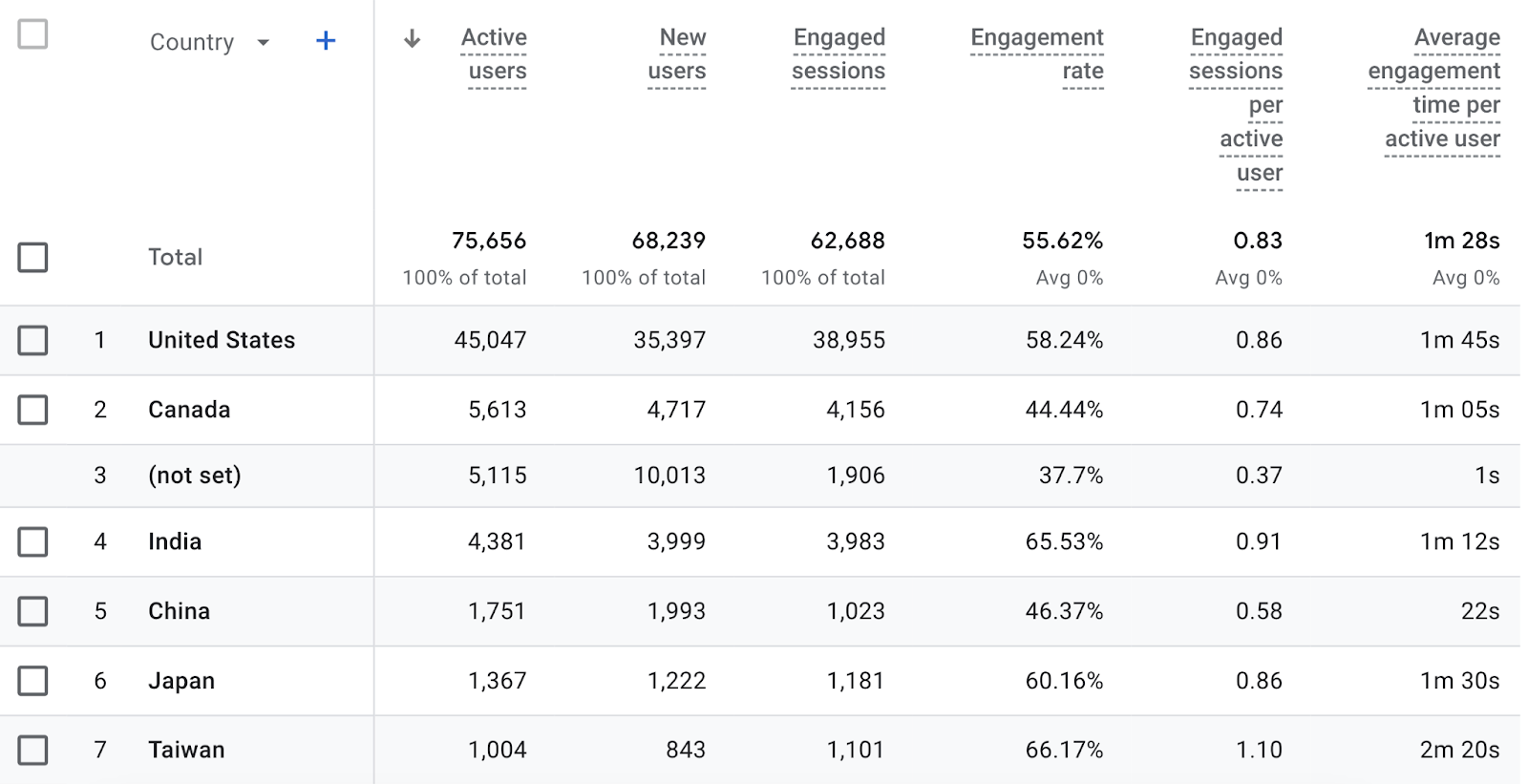
Next, check how these international visitors interact with your site. Look at:
- Which service and/or product pages they visit
- How long they spend on these pages
- Whether they take actions that support your business goals
Let’s say you own a U.S. brand and notice visitors from France spend a significant amount of time on one of your product pages. And they even fill out forms despite your site being exclusively in English.
These signals indicate you might want to consider entering the French market.
Assess Market Viability
Market viability shows if expanding to a new region is operationally feasible and likely to be profitable.
The presence of multiple competitors that are successful (as opposed to just one or two that dominate) in a market can indicate it’s viable and has enough demand to support your business.
Semrush’s Market Explorer tool can help you with this assessment.
Select the “Analyze Category” tab, select your category from the drop-down, enter your desired location, and click “Research a market.”
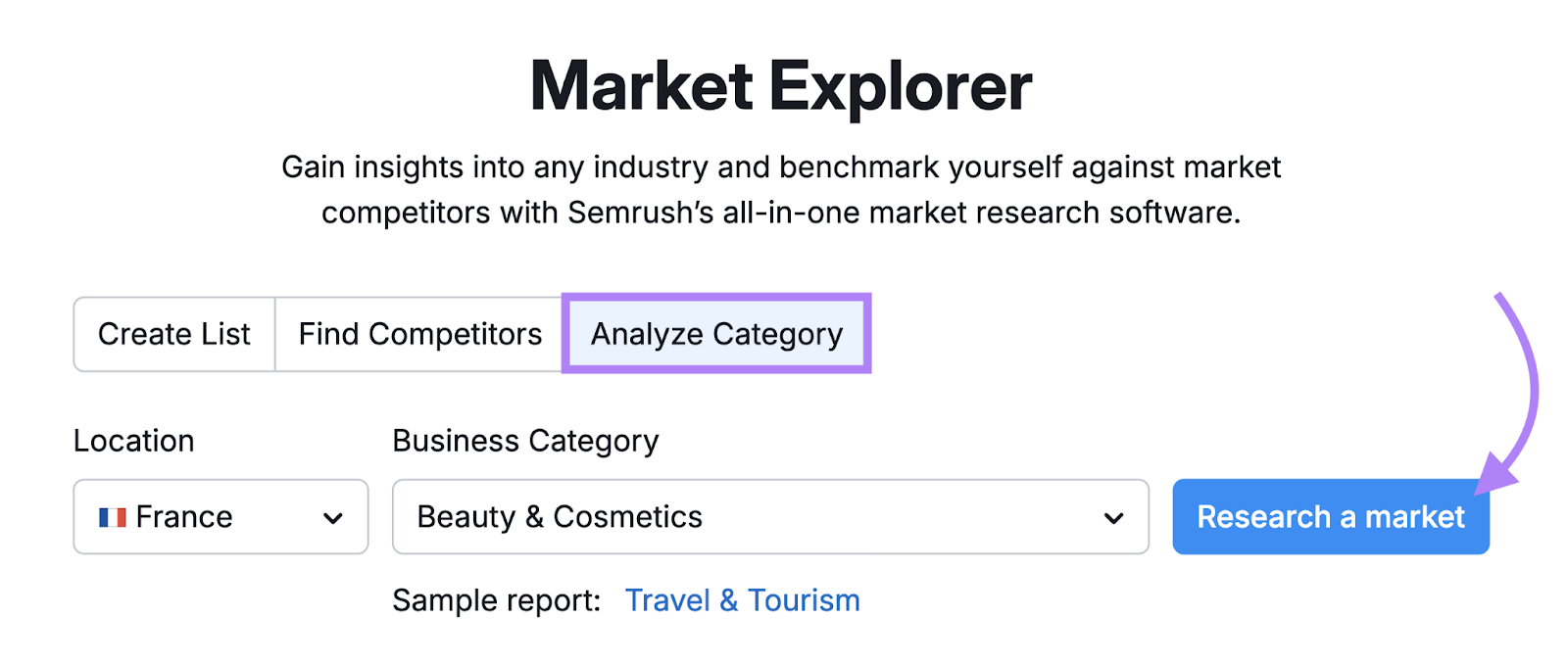
Review the “Overview” tab to get a better understanding of how viable this market is.
In this case, there’s a good number of potential buyers (Market Size), the market’s total monthly website traffic is nearly 100 million visits (Market Traffic), and there’s a low enough level of consolidation to suggest opportunities for newcomers (Market Consolidation).
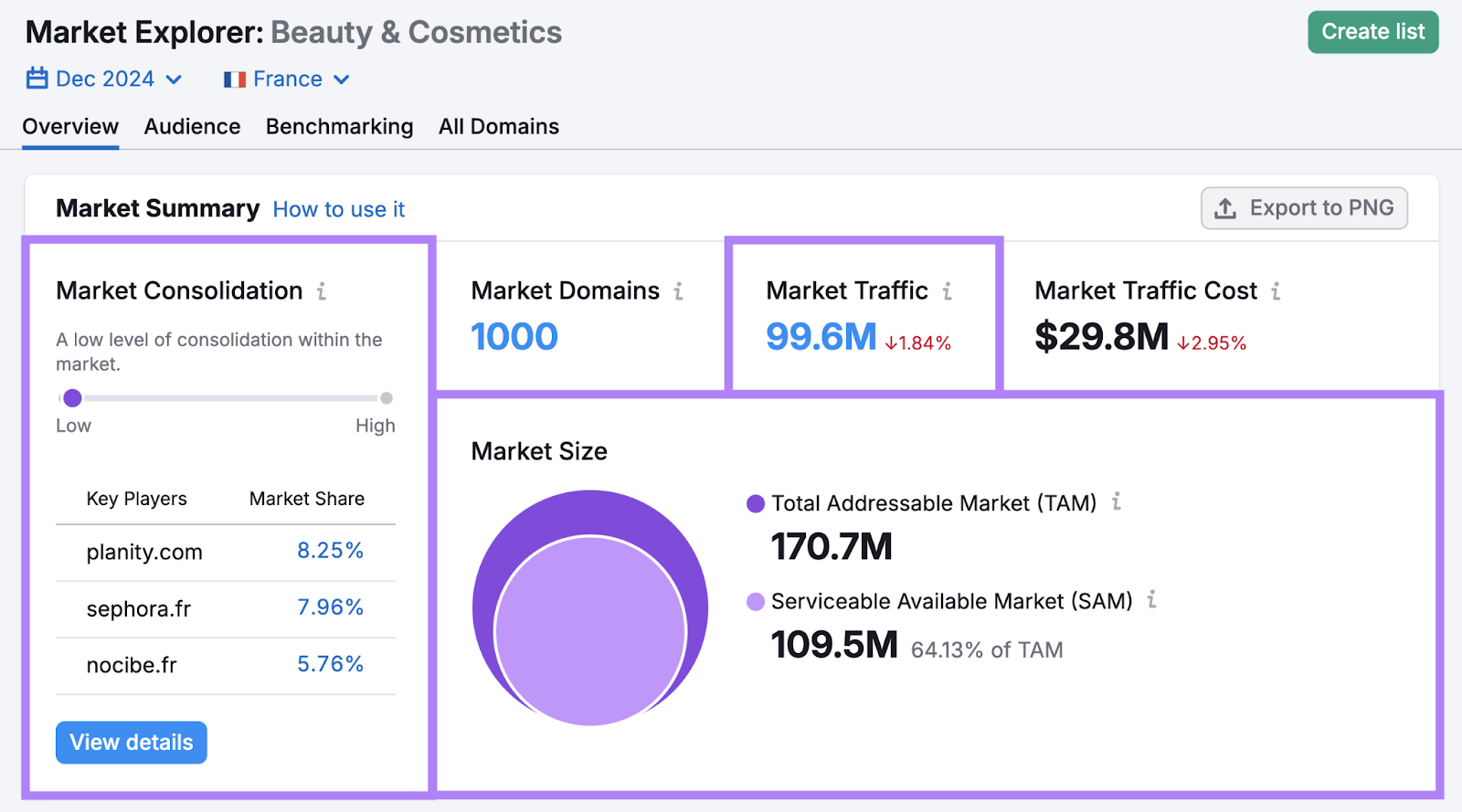
To succeed in this market, you should also do the following:
- Confirm you can handle international shipping costs and logistics
- Review country-specific regulations
- Make sure you understand cultural preferences and buying habits
Review International SEO Resource Requirements
Expanding into new markets via SEO requires specific resources to succeed.
Here's what you'll need to invest in if you want to implement international SEO:
- Professional translation and content localization (images, blog content, etc.)
- Technical setup (regional URLs, hreflang attribute implementation, etc.)
- More content creation support (writers, editors, etc.)
Once you've evaluated these requirements, you can make an informed decision about international expansion.
4 Best Practices for International SEO Success
To create an effective international SEO strategy, you need to research your target markets, optimize for local search behavior, adapt your content, and build regional authority.
Conduct Thorough Market Research for Different Regions
Market research reveals who your competitors are, what your target audience wants, and how they behave in each region you plan to enter.
This helps you tailor your SEO international approach for each region, maximizing your reach to the right audience.
Use Semrush’s Market Explorer to understand a new market.
Open the tool and select the “Find Competitors” tab.
Enter your domain and target location, then click "Research a market."
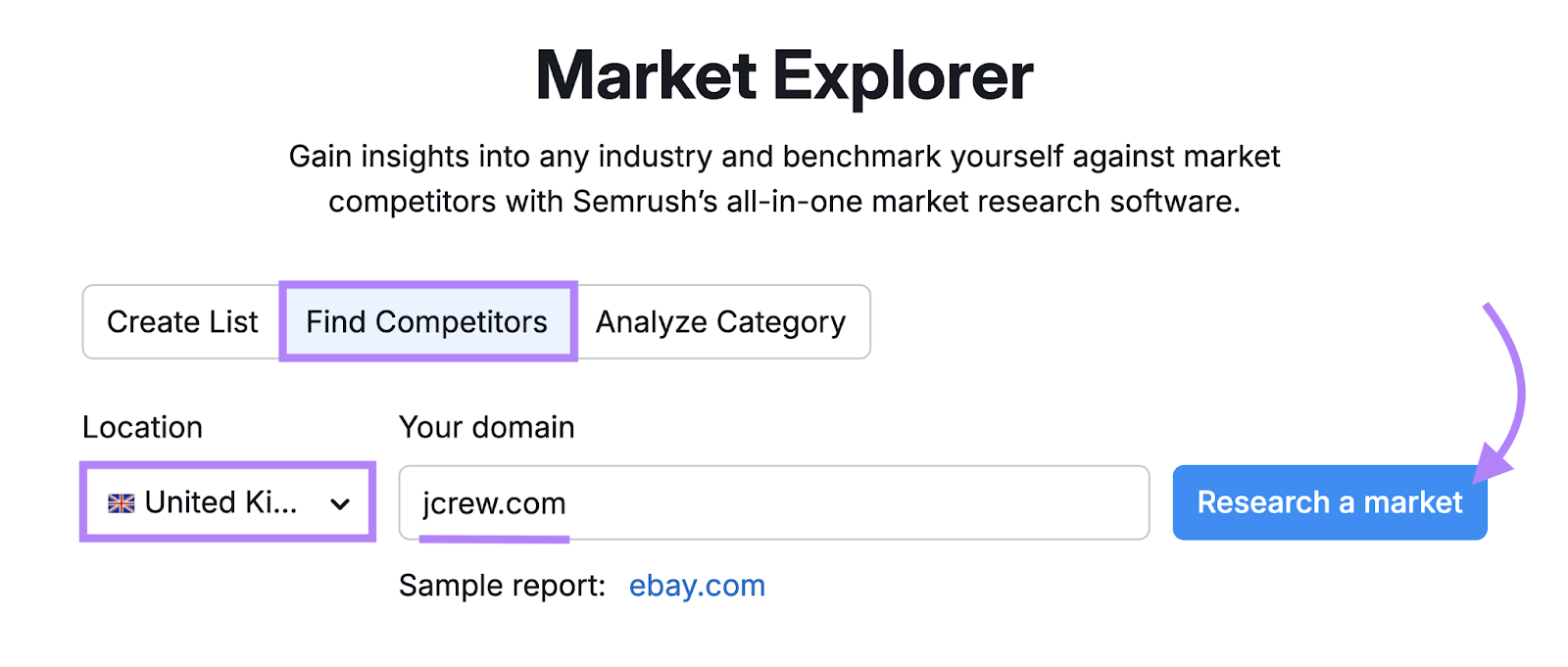
In the “Overview” tab, you’ll see the key players, top and trending keywords, and more.
This data should give you a high-level picture of your new market and who you’re competing with.
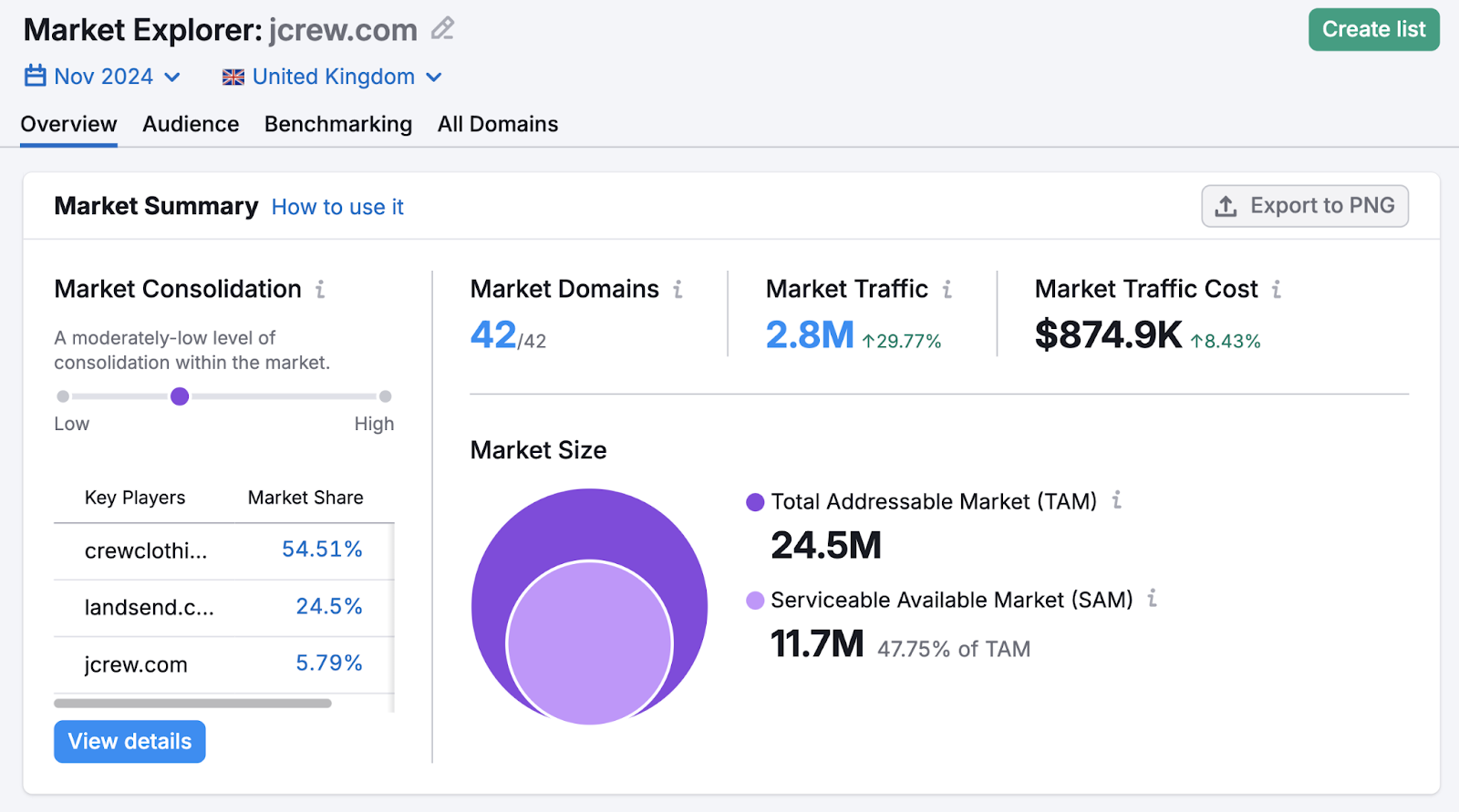
Next, go to the “Audience” tab to learn more about the target audience’s demographics.
You’ll find data about their age, socioeconomics, interests, social media use, and the domains they visit.
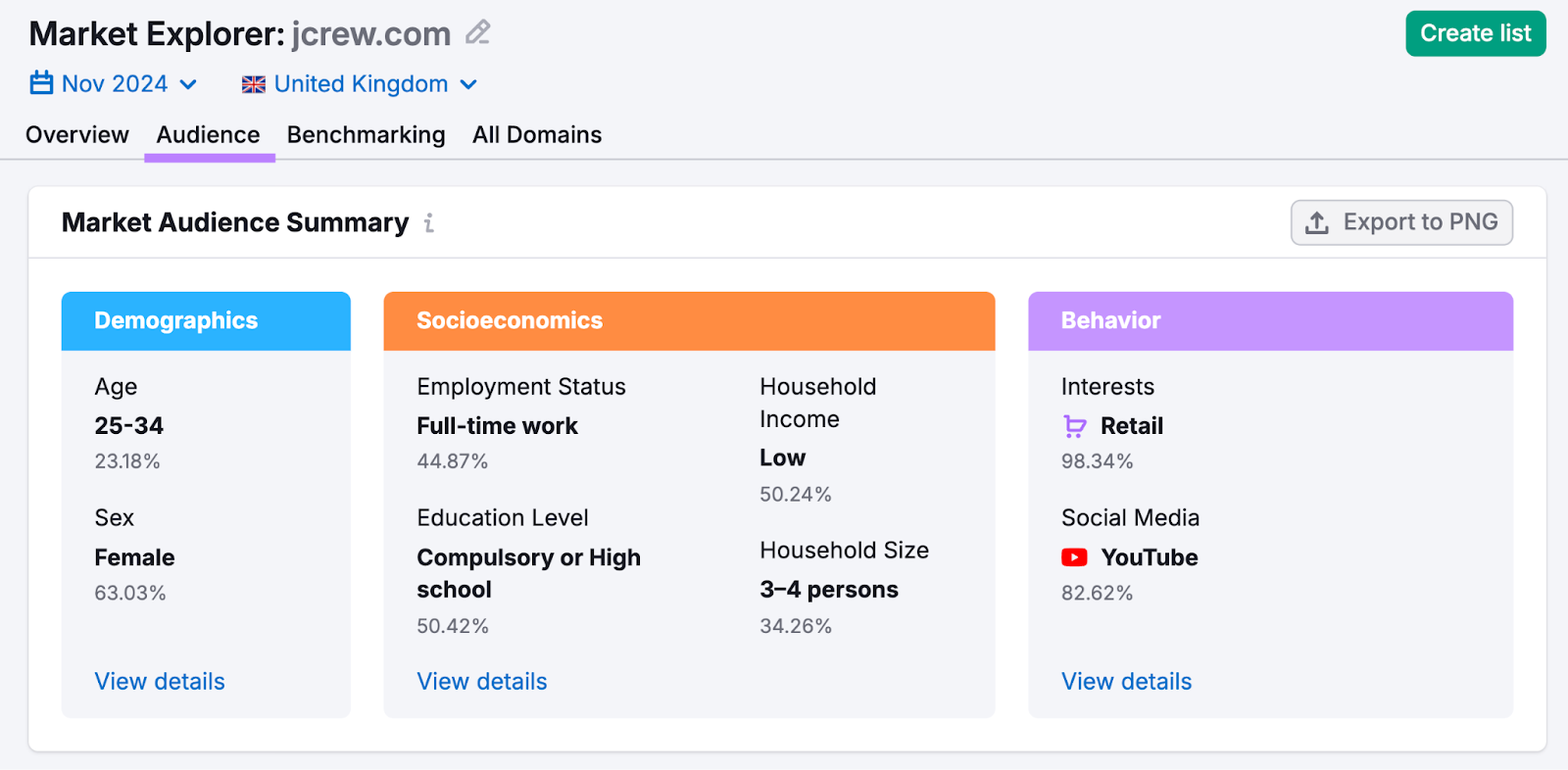
Let’s say you discover your audience in the new market primarily belongs to a high-income bracket. You can then focus your localized content on highlighting premium features and quality.
Identify Keywords for Your Target Country
International keyword research uncovers search terms people in different countries and regions use to find products, services, or information online.
To find the right keywords, consider cultural nuances, specific search behaviors, and language variations.
For example, if you sell glasses and are expanding to Mexico, you would want to use the word “lentes” (which is used in Mexico) rather than “gafas” (which is used in Spain).
Start your research by analyzing your competitors’ keywords to uncover queries working for them.
Use Semrush’s Keyword Gap tool to compare your current rankings in Google with competitors’ rankings in your new market.
Enter your domain, add up to four competitors, and select your target location. Click “Compare.”
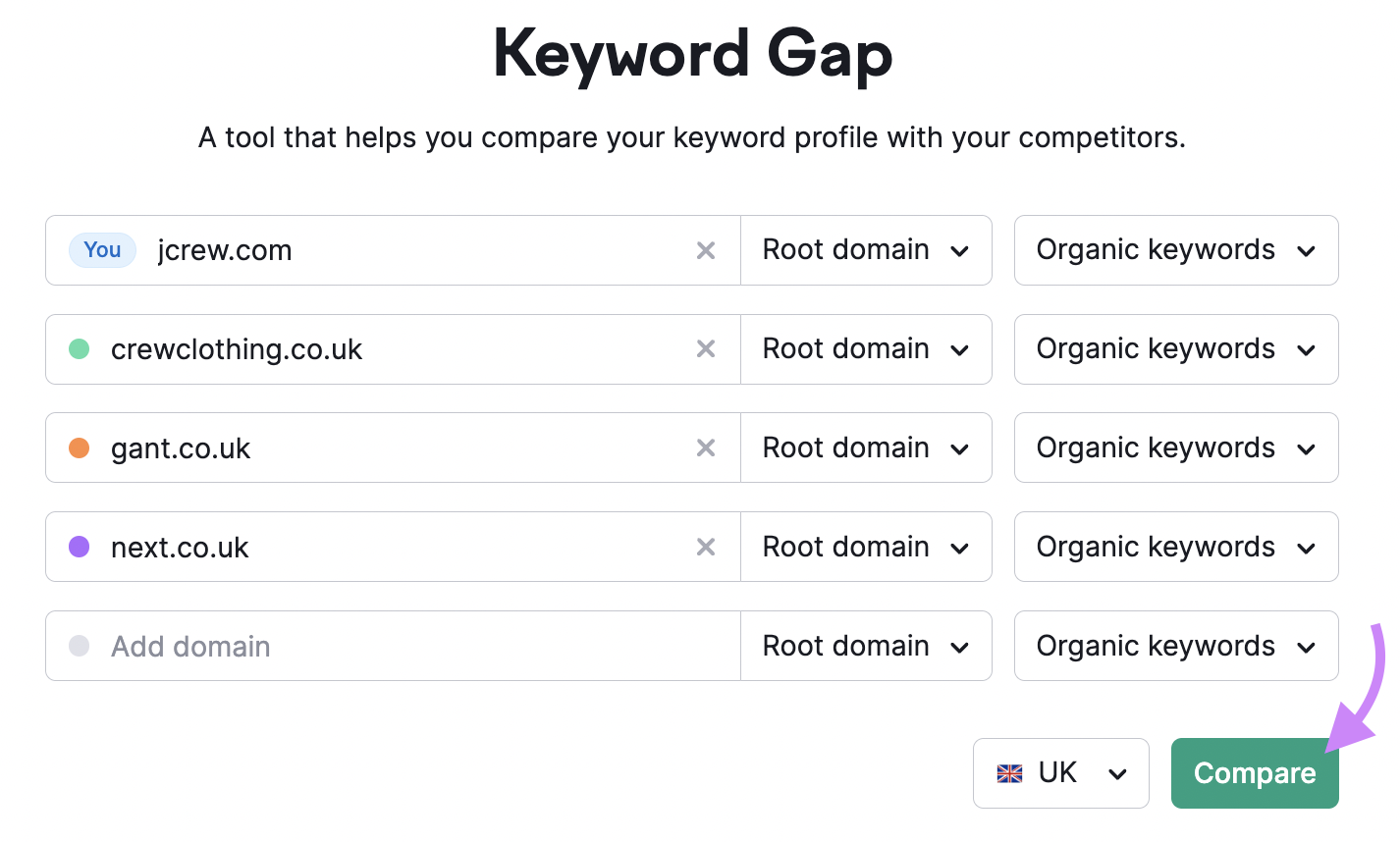
You’ll see top opportunities for keywords you aren’t ranking for at all (“Missing”). And ones where you rank lower than all your competitors (“Weak”).

Scroll down to see a table with details for:
- Keywords you outrank all your competitors for
- Keywords you’re not ranking for
- Keywords your competitors outrank you for
And more.

You can filter this keyword list based on different criteria. Like average monthly search volume and keyword difficulty (a measure of how difficult it is to rank in the top 10 for a given keyword).
Once you’ve gathered a handful of keyword ideas, run those terms through Semrush’s Keyword Magic Tool to get even more relevant terms to target.
For example, a U.S. company looking to expand to the U.K. could enter the broad keyword “uk clothing brands” to discover related terms that may be easier to rank for or more relevant.
Open the Keyword Magic Tool, enter your keyword and your domain, choose the location, and click “Search.”
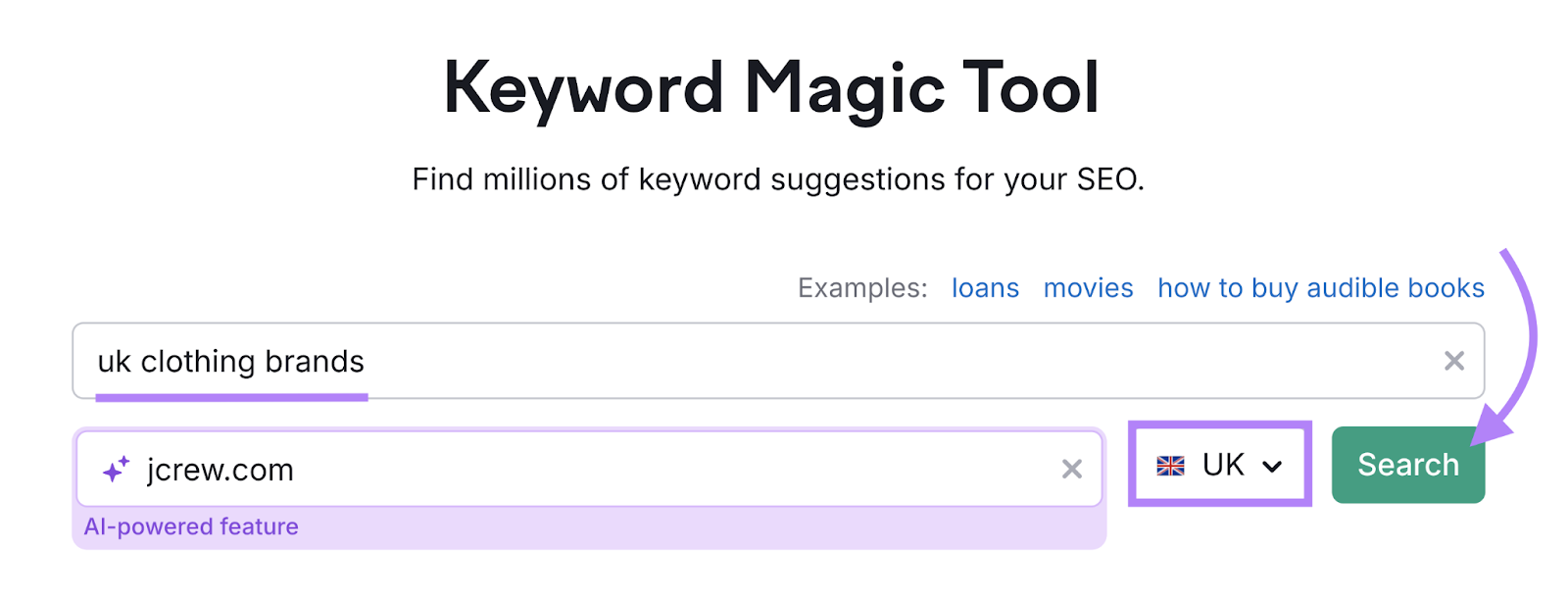
You’ll see a list of thousands of potential keyword ideas, but not all of them will be relevant to your brand.
Use filters to narrow down that list.
For instance, filter by “Questions” to find question-based search terms. Or choose “Related” to find variations you might not otherwise know about.
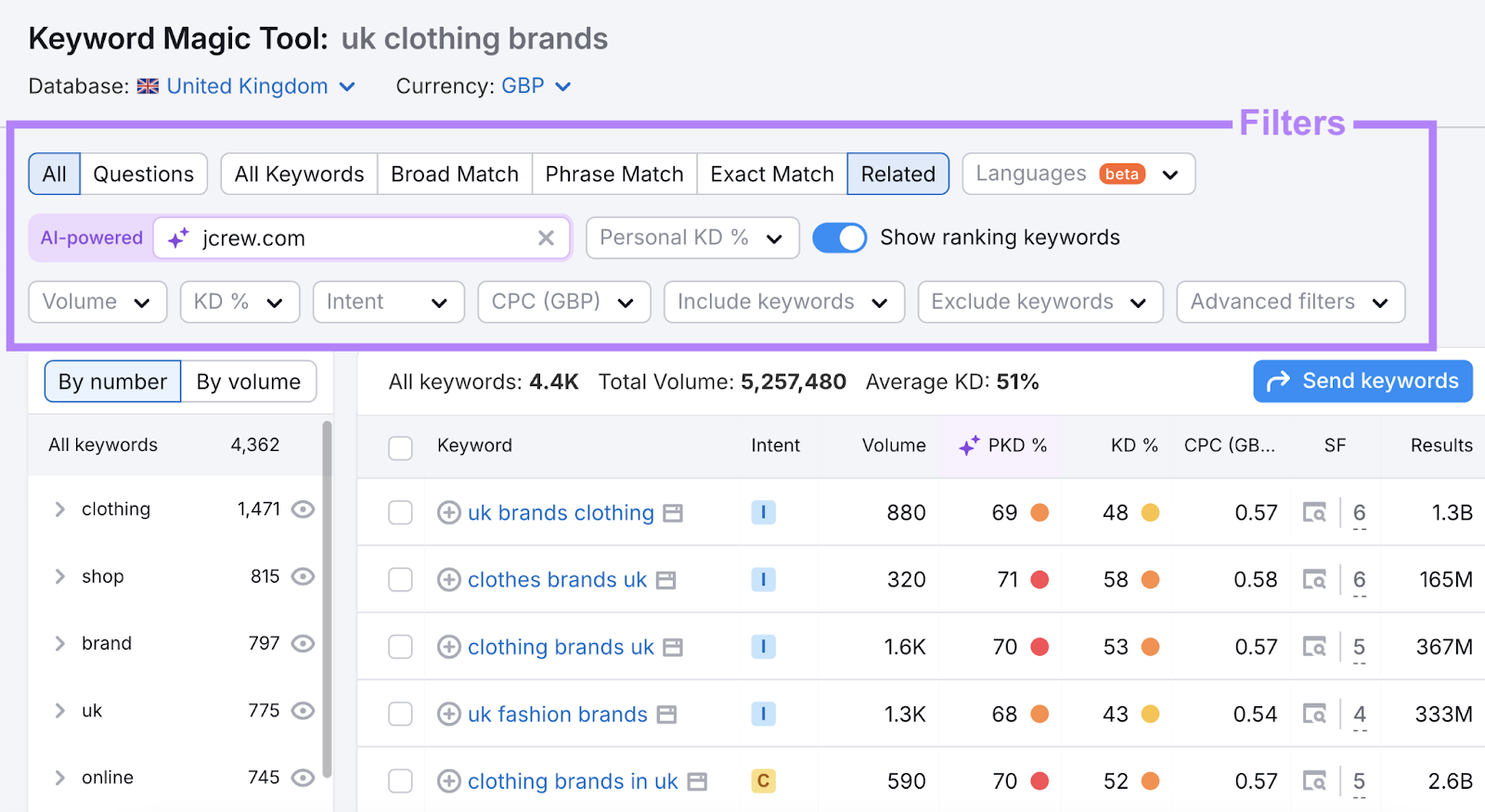
You can also discover more niche keywords to target by using the suggested groups and subgroups on the left.
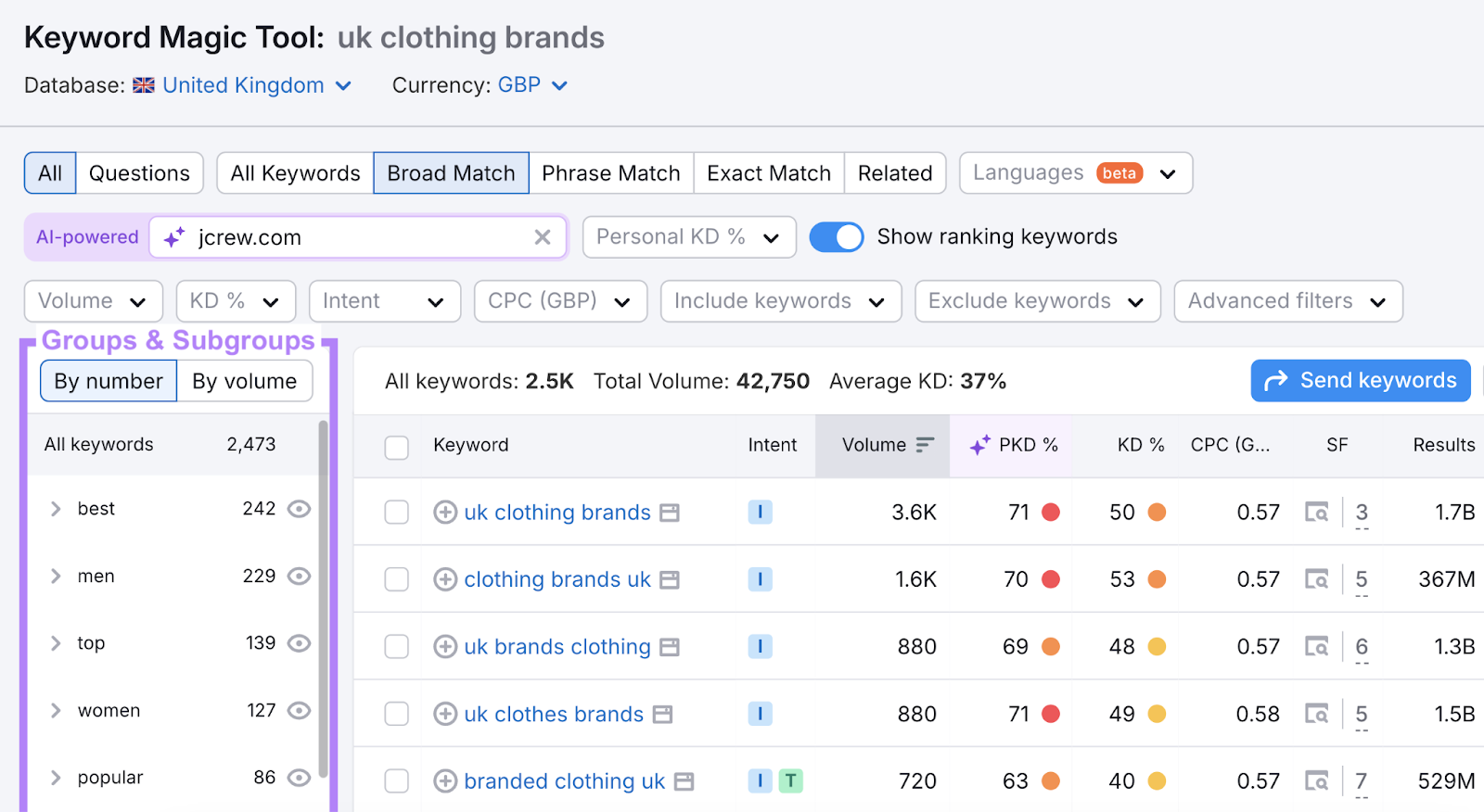
Keep in mind that the keyword research options shown above are specific to Google.
You’ll want to find out whether there are other search engines your new market prefers.
While Google leads in most countries, some regions prefer other search engines. For instance, Yahoo has a nearly 10% market share in Japan. Baidu is popular in China. And Yandex is common in Russia.
If you’re entering a market where another search engine is prevalent, it’s a good idea to familiarize yourself with that specific search engine’s ranking signals.
Adapt Your Content for Cultural and Regional Preferences
Content localization adapts everything about your website's content to match the cultural preferences and expectations of your target region.
It goes beyond translation.
Translation simply converts text from one language to another while maintaining its meaning.
Localization adapts your entire messaging to match local preferences, values, and cultural context.
Here's an example of a localized page by an American beauty brand.
They created region-specific content for their European audience that connected their products with Europe's most popular sport.
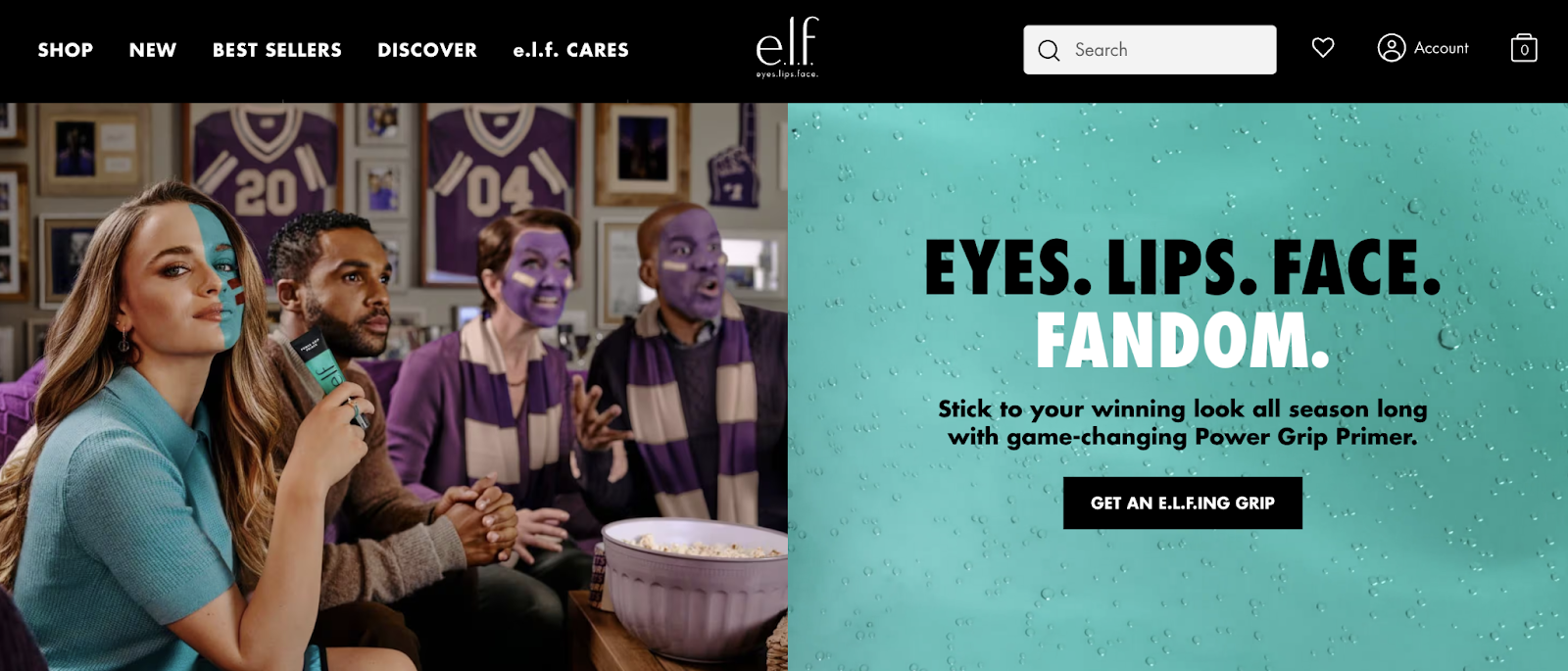
To localize your content, research your target market's preferences and adapt your messaging, visuals, and examples to reflect what resonates with that audience.
Here are some ways you can adapt your content to your new target audience:
- Create content for location-specific holidays like the Lunar New Year in China
- Follow legal and regulatory compliance guidelines like GDPR for the EU
- Translate content accurately and localize it to reflect regional idioms, slang, and expressions
- Address the specific needs, challenges, or interests of your target audience through relevant topics
- Adjust currency and pricing to match the local market
- Incorporate links to trusted regional sources to build trust and signal relevance
Build Relevant Backlinks
Building backlinks from reputable websites in your target market helps search engines understand your content's relevance for that region.
Getting these local backlinks also drives targeted traffic to your regional pages.
To attract backlinks from locally relevant sites, your content needs to resonate with local audiences.
For example, if you have an infographic on hiring stats in the U.S., translating it to Spanish won’t provide value to your audience in Spain. Including local hiring stats and region-specific visuals will ensure the content has a better shot at getting backlinks.
Format also matters.
Here are a few content formats that typically attract backlinks:
- In-depth guides and tutorials that demonstrate your expertise
- Original data and research
- Infographics and other data visualizations
- Case studies and client success stories
- Interactive content like quizzes and calculators
You can find good backlink prospects and conduct outreach using Semrush’s Link Building Tool.
Enter your domain’s URL into the tool. And click “Start Link Building.”
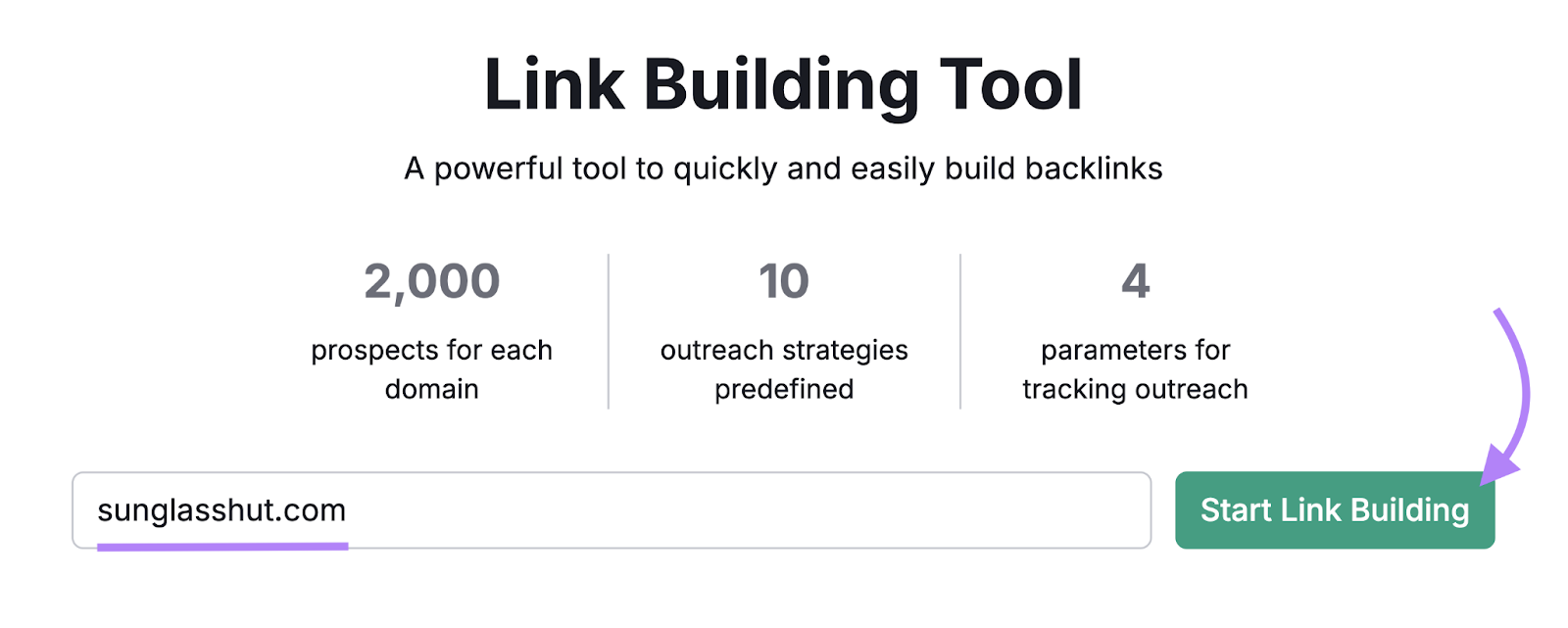
Then, follow the prompts that appear to set up your project. Make sure to add local keywords, set the country to your new target market, and add your regional competitors.
Click “Start Link Building.”
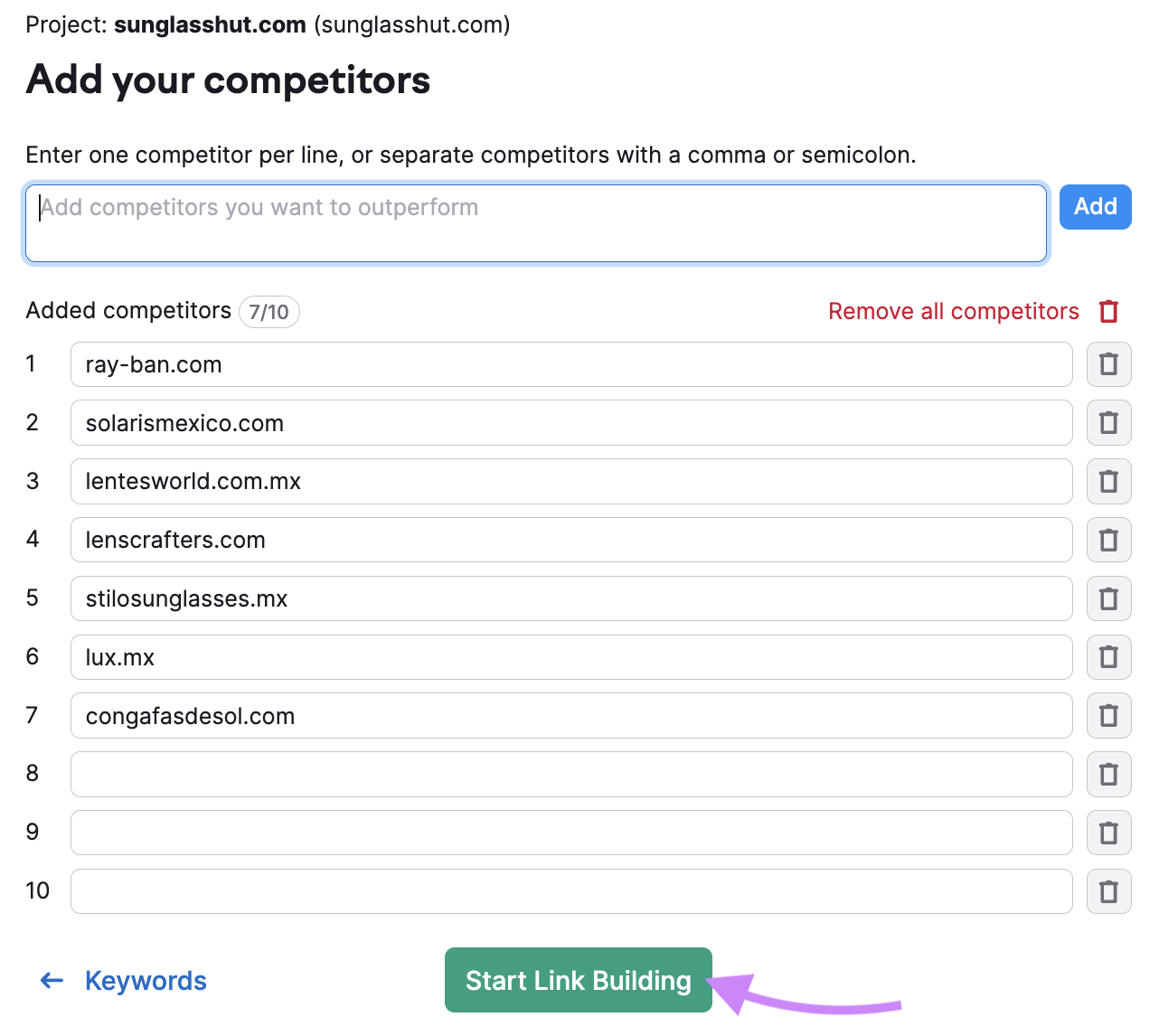
When the project is ready, go to the “Prospects” tab to see a list of websites you can reach out to for backlinks.
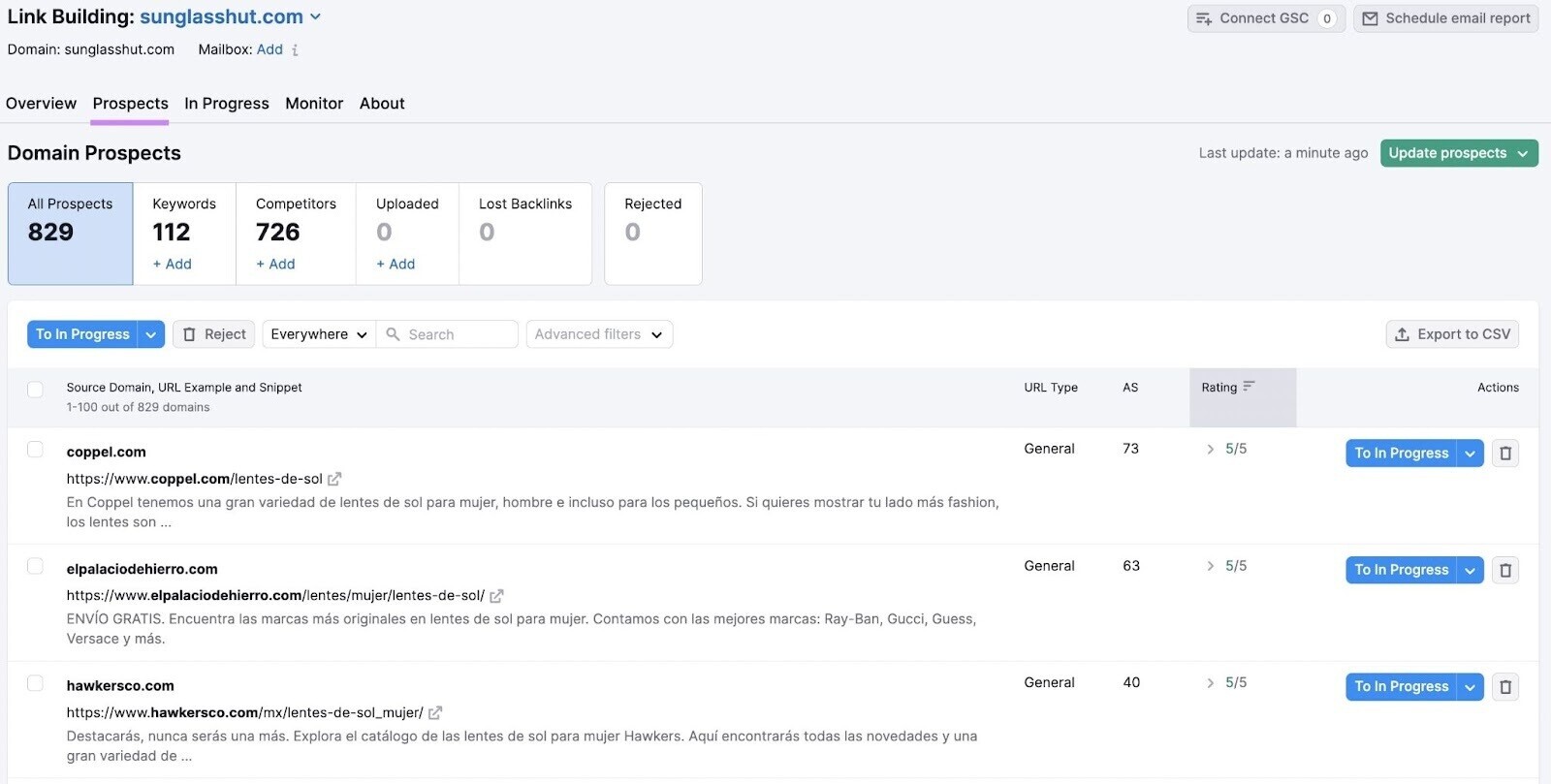
Add the most promising prospects to your “In Progress” list. Then, create and send outreach messages.
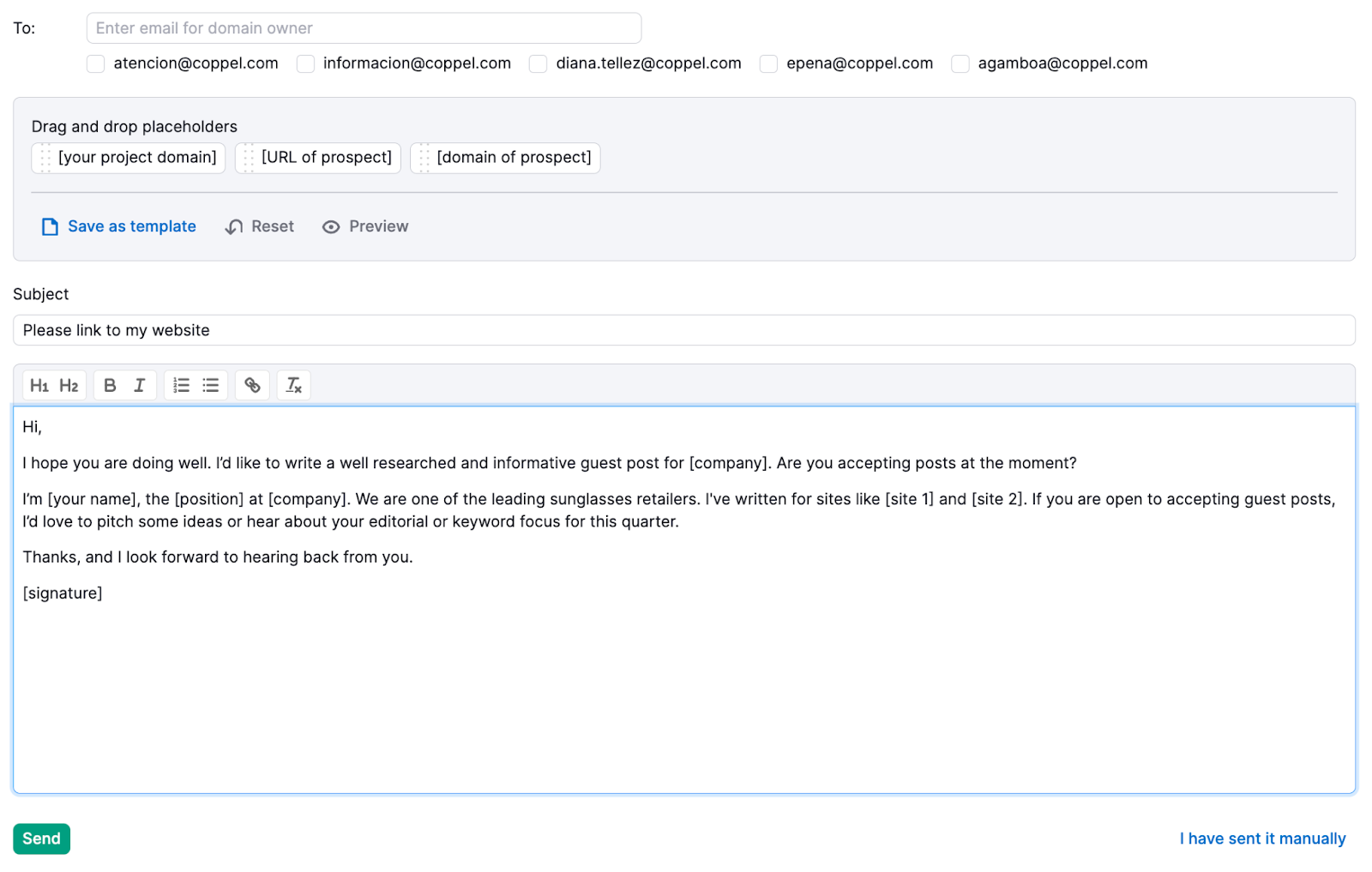
Further reading: How to Get Backlinks: 10 Strategies That Work
Technical Considerations for International SEO
Addressing technical elements for international SEO ensures search engines can properly find and understand your international content, which helps improve visibility in each target region.
Here are three critical technical SEO elements you need to do correctly:
Implement Region-Specific URLs
Region-specific URLs help users and search engines identify which version of your website is meant for which country or language.
Google recommends implementing one of the following practices:
- Use a country-specific domain. This means creating a separate domain for each market (like “www.yourwebsite.fr”). While this is the most expensive option and works only for a single country, it clearly signals to both users and search engines which country you're targeting.
- Set up subdomains with a generic top-level domain (gTLD). This uses different subdomains for each region (like “fr.yourwebsite.com”) and is best for websites hosted on servers in multiple locations. It’s easier to set up than country-specific domains, but users might not immediately recognize whether the subdomain refers to a country or language.
- Create subdirectories with a gTLD. This method uses different folders (subdirectories) for each region (like “www.yourwebsite.com/es” for Spanish content) and is the easiest to set up. That said, the location targeting isn't as clear as with country-specific domains.
Implement Hreflang Tags
Hreflang tags are HTML attributes that tell search engines which version of your page to show users based on their language and location.
They’re a key element of international SEO because, users might see the wrong language version of your content in search results without these tags.
Here's how hreflang tags work:
Let’s say your U.S.-based company wants to serve content in French to audiences in France. For this, you'll need tags for both versions:
<link rel="alternate" href="https://www.example.com/page" hreflang="en" />
<link rel="alternate" href="https://fr.example.com/page" hreflang="fr" />Each tag includes:
- link rel=”alternate” indicates an alternate version of the webpage
- href="[page]" includes the alternate page in the target language or region
- hreflang="[language code]" specifies the language and sometimes a region (like "en-us" for American English)
Always include tags for all language versions, including the original page. Google calls this a "self-referencing hreflang" and recommends it for proper implementation.
Then, use the Site Audit tool to check your hreflang implementation.
Open the tool and enter your domain. Then, click “Start Audit.”

Follow the steps to configure your settings. And click “Start Site Audit.”
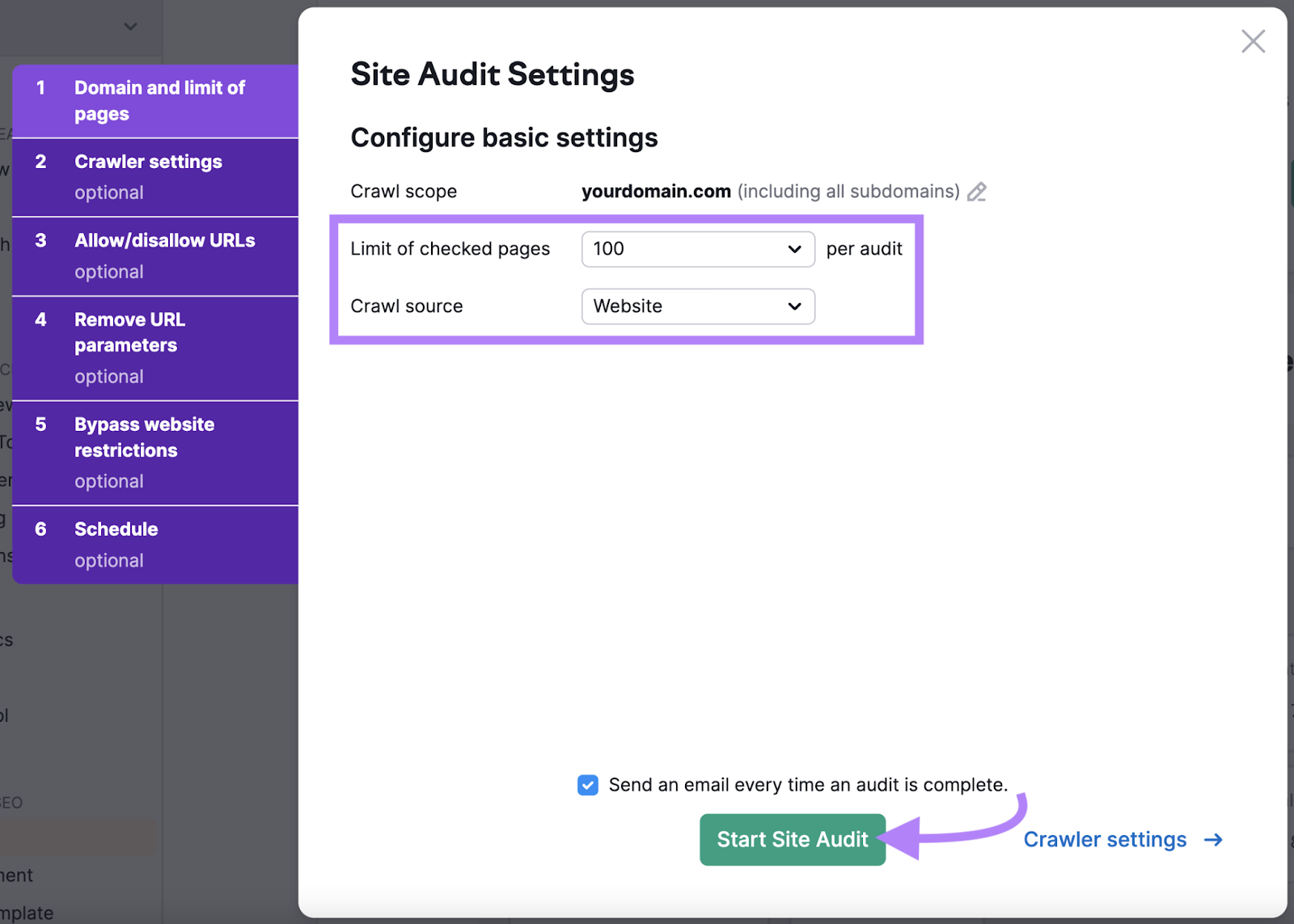
Once the audit is completed, you’ll see an “Overview” report like this:

Go to the “Issues” tab and click “Errors” to look for potential hreflang implementation issues.
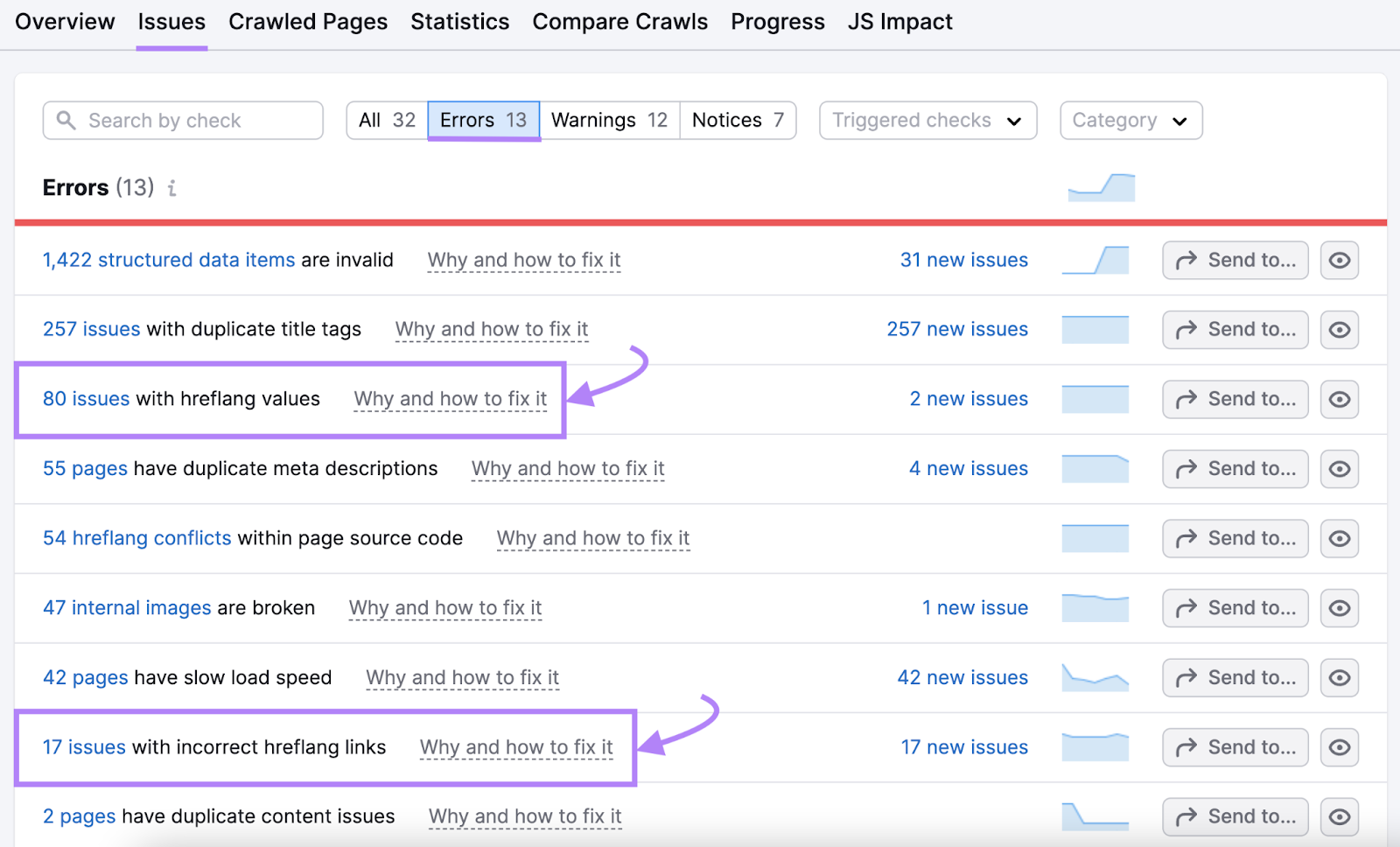
Click “Why and how to fix it” to learn more about the issue and how to fix it.
Handle Duplicate Content and Canonicalization Issues
When you have similar content across different regional versions of your website, search engines need help understanding which version is the main one to rank in each region.
Without this specification, you’ll end up with duplicate content.
Duplicate content happens when you have the same or very similar content on multiple pages. This is common with international websites.
Say you sell shoes in both the U.S. and the U.K.—your product descriptions will be almost identical.
When search engines find duplicate content, your pages can compete with each other. This is called keyword cannibalization.
Canonical tags solve this problem. They tell search engines which version is the main one for each language.
Here's what a canonical tag looks like:
<link rel="canonical"href="https://yourwebsite.com/uk/product-category/product-name"/>When you use both hreflang tags (for language targeting) and canonical tags on your international pages, keep them in sync.
For instance, if you have a product page in English and French, make sure the English version's canonical tag points to the English page. And the French version's canonical tag points to the French page.
How to Track Your International SEO Performance
Tracking your performance in each target market helps you identify which SEO tactics are working and where you need to adjust your strategy.
Use Google Analytics 4 to understand how visitors from different regions interact with your site. You'll want to track:
- How much organic traffic comes from each country
- Which content works best in different markets
- How visitors from each region engage with your site
- Whether visitors are converting
- If certain regions have higher engagement
You can find these insights in your GA4 account under "Reports" in the left sidebar.

Next, track how visible your content is in each market's search results using Semrush’s Position Tracking tool.
The tool monitors your keyword rankings in different regions, showing you exactly where your pages appear in search results for local visitors.
Open the tool, enter your domain, and click on “Set up tracking.”
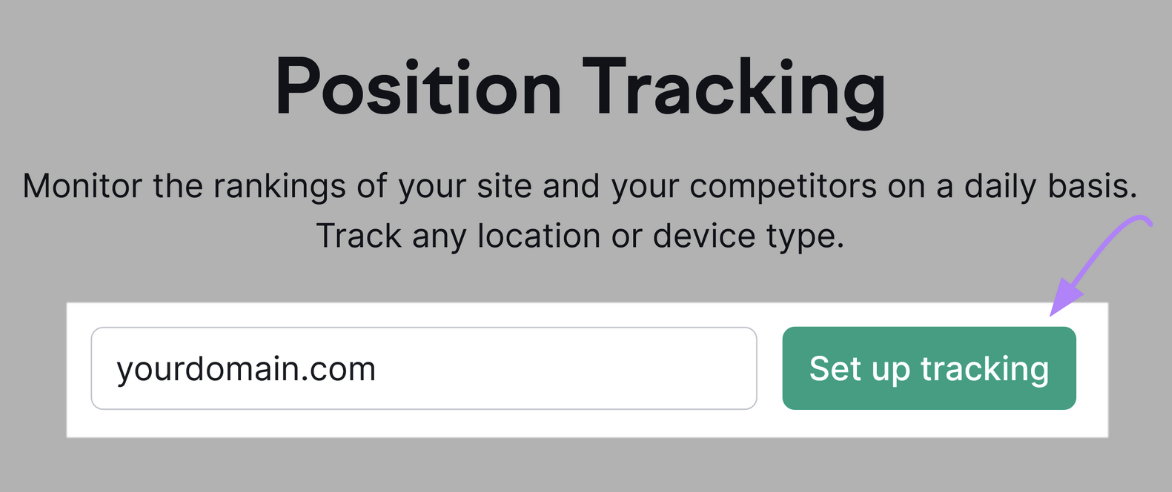
Follow the steps to configure Position Tracking.
Once set up, go to your “Devices & Locations” tab to see your search visibility across multiple locations.
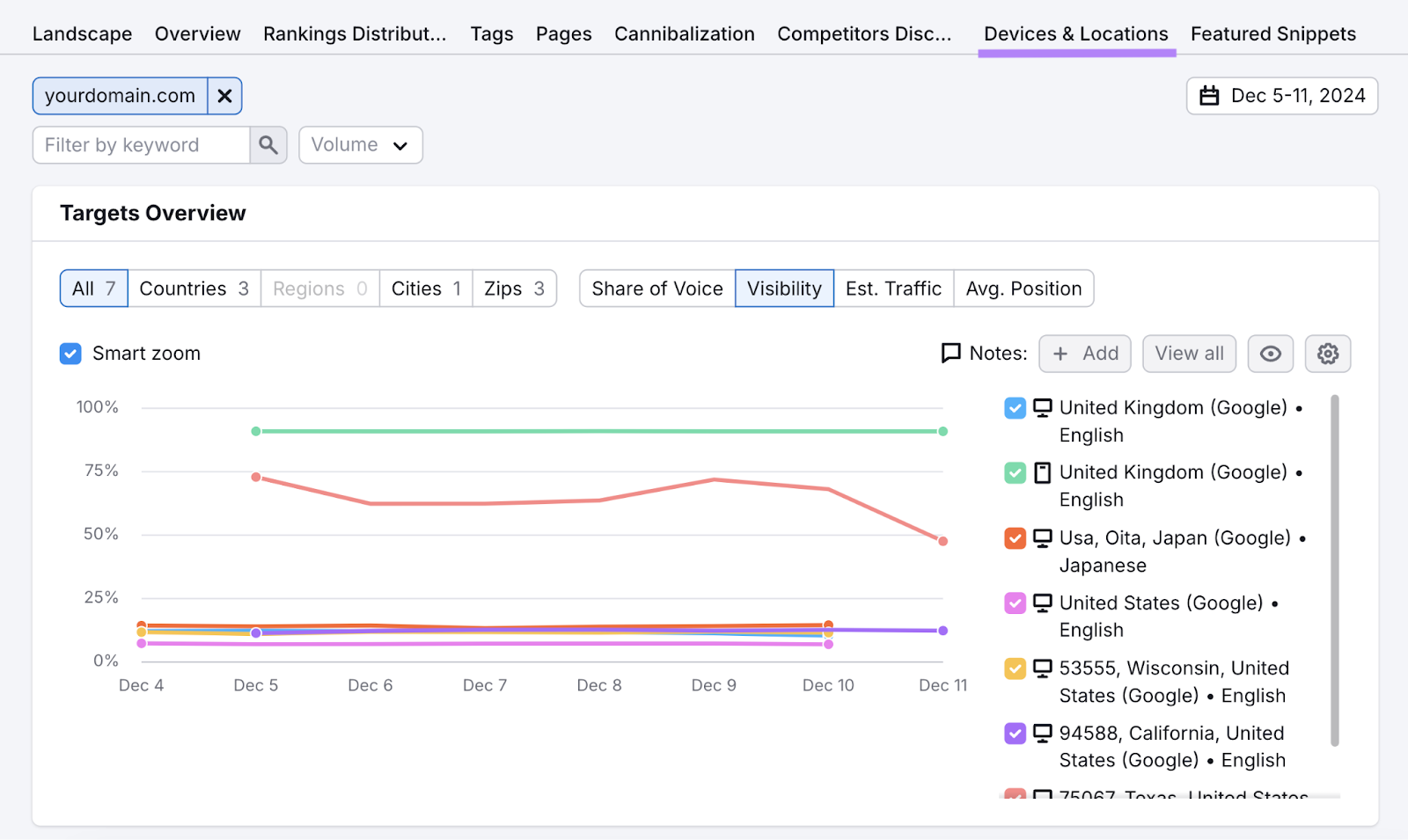
From here, evaluate your rankings and how they’ve changed to learn whether your strategy is working.
Expand to New Markets with International SEO
Gaining online visibility in new markets requires a smart approach to international SEO.
So, start by understanding how your target market searches in their language and region.
Find relevant keywords, search trends, and opportunities with the Keyword Magic Tool. Try it for free.
